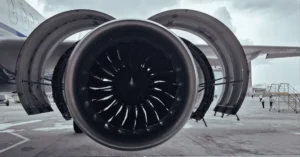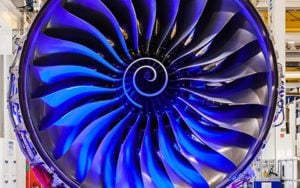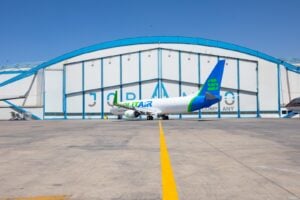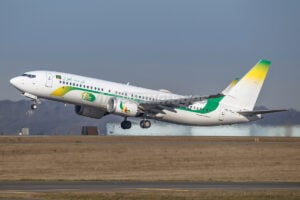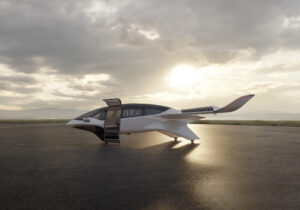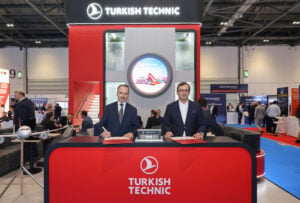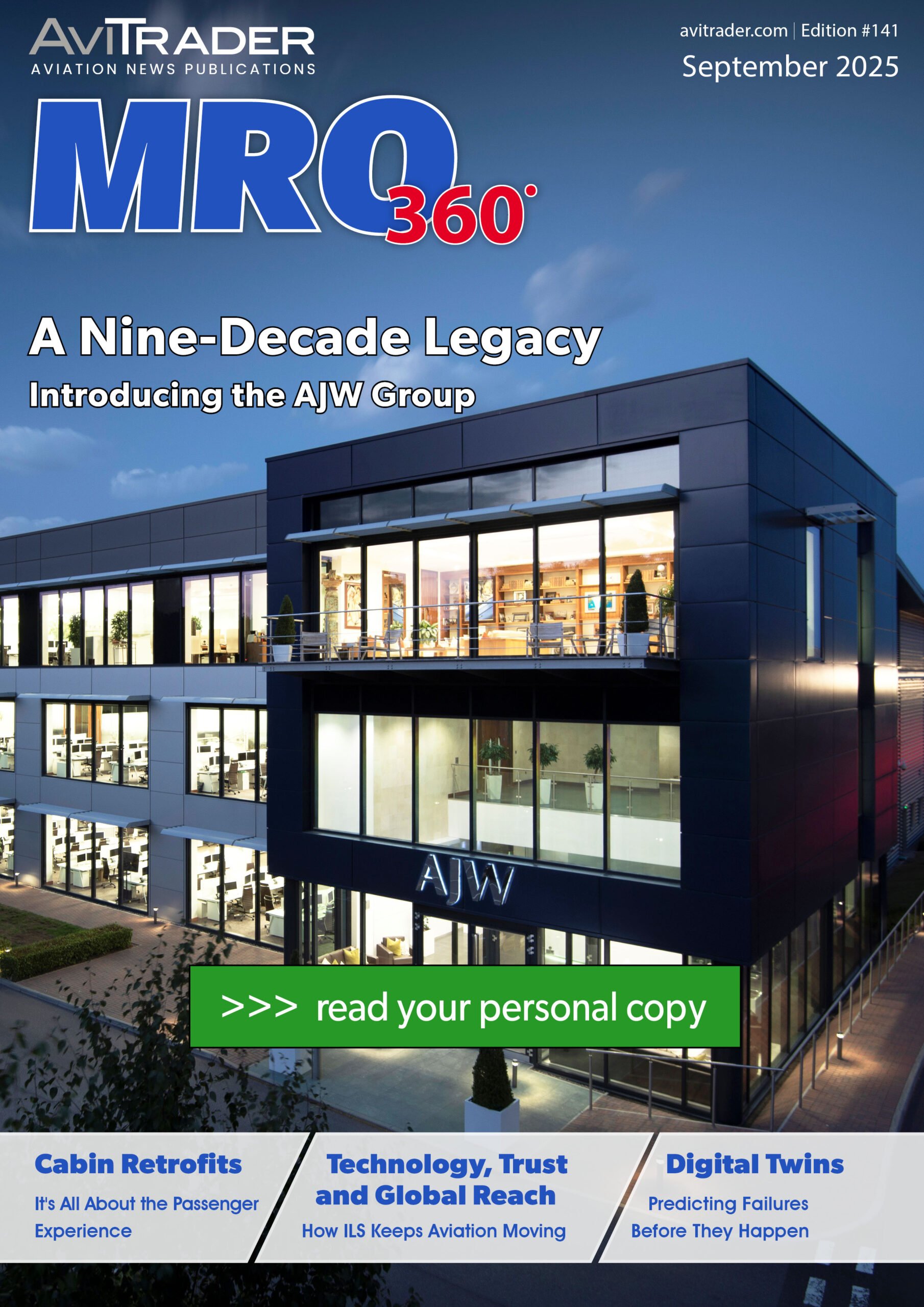By David Dundas
As with most groundbreaking new technologies, it took a while before 3-D printing became mainstream and even longer for it to be adopted by the aerospace industry. It was way back in 1984 that Chuck Hall developed Stereolithography (SLA), a specific technique which involved curing photosensitive resin with UV light to build objects layer by layer. SLA marked the beginning of additive manufacturing technologies and is seen as the birth of modern 3-D printing. That developed into Deposition Modelling (FDM), which was a heavily patented form of 3-D printing. However, come 2008 the patents surrounding FDM expired and suddenly, the restrictions on who could use 3-D printing technology to their advantage were lifted. The rest, as they say, is history.
In this article we want to delve into how 3-D printing has become a key driver for MROs in helping to improve efficiency, enhance operational readiness and revolutionise certain maintenance practices.
A key solution to many supply chain problems
Ask any MRO operation what the greatest challenge they currently face is, and supply chain problems are likely to come at the top of their list. This is where 3-D printing has come into its own as it bypasses the supply chain almost completely. Now here one has to acknowledge that when it comes to the manufacturing of any spare parts for an aircraft, safety has to be first and foremost as the aviation industry is a complex and highly regulated sector, where safety, efficiency, and innovation have to effectively converge to ensure seamless operations. Consequently, there is a limit to the type of spare parts that can be printed three dimensionally. In general terms these parts will be made from composite materials (e.g. carbon fibre) that can be easily incorporated within an existing structure, and hence why this technology is also referred to as additive manufacturing (AD). The advantages presented by 3-D printing are that it is extremely accurate, of the highest quality, and involves minimal wastage, enabling the manufacture of extremely complex and also customised parts.
Where can 3-D printing be applied in the aircraft maintenance sector?
The most obvious use for 3-D printing is for spare parts. As mentioned, by-passing the supply chain solves many current problems, while also reducing the costly need to hold extensive inventory and also avoid lengthy lead times for parts’ delivery. ‘On-demand’ production is cost- and time-effective, especially as maintenance crews can manufacture needed parts on site or near to maintenance facilities which can also help to significantly reduce down time.
Additionally, aircraft maintenance often requires the use of unique tools tailored for very specific tasks, so there is the option of the rapid design and printing of lightweight ergonomic tools that are fit for purpose as well as printing standard tools on an as-and-when-needed basis.
One of the areas where 3-D printing proves its worth is for repair solutions. As is often the case, certain damaged components can be repaired as opposed to a much more costly replacement, assuming, of course, that structural integrity is in no way compromised. Additive manufacturing (3-D printing) can swiftly and in an extremely accurate manner, restore damaged parts by adding material to the damaged area. Other than saving on costs, this form of maintenance also helps with sustainability through the extension of a parts’ lifecycle.
Finally, we have a necessity for 3-D-manufactured parts driven by the delay in aircraft deliveries, and that is because there are a good number of older, legacy aircraft that have remained operational well beyond planned retirement age. This means there is a shortage or USM (Used Serviceable Material) from teardowns, and often there is no longer the availability of OEM (original equipment manufacturer) parts either as there was no anticipated longer-term demand. Consequently, 3-D manufacturing has proved to be a gamechanger for MROs working on legacy aircraft.
The benefits of 3-D printing for MROs
As we have touched on above, there are several key benefits to using 3-D printing within an MRO set-up. First off, traditional manufacturing processes often involve extensive tooling and setup, which can take weeks or even months. With 3-D printing, parts can be produced in hours or days, drastically reducing lead times and enabling a quicker turnaround time for aircraft maintenance.
Second, we have cost efficiency. Admittedly there is a substantial, initial capital outlay to set up your 3-D printing capability, but over time, the ROI is significant as the cost savings for printed parts can be considerable. Beyond this, there is no supply chain to worry about, there is next-to-no supply chain, the lead-up time is nominal aside from allowing for design of the required part (where necessary) and, of course, there is a substantial reduction in the volume of inventory that needs to be held.
With the ability to manufacture your own bespoke tools comes the ability to find alternative solutions to accepted norms. This level of customisation is particularly valuable in maintenance scenarios where standardised solutions could be deemed inefficient or too time-consuming.
Lastly, we have sustainability, where 3-D printing, or additive manufacturing, supports environmentally friendly practices by reducing material waste and energy consumption compared to traditional manufacturing methods. Beyond this, the ability to repair and refurbish components is very much in keeping with the aviation industry’s goals where sustainability are concerned.
Challenges and limitations faced by 3-D printing
While we have looked at the many positive aspects of 3-D printing, it is clear that the technology also comes with certain industry-specific challenges. To begin with, there is the key element of ensuring safety, which comes in the form of regulatory compliance. In the aerospace industry, all aircraft parts must adhere to stringent safety and quality standards and, as a consequence, certification of 3-D-printed parts can be a complex and time-consuming process.
Next, we have the limitations placed on what can be manufactured using the 3-D printing process as there is a limit to the type of base materials that can be used for the purpose of printing. In simple terms, not all materials used in the manufacture of aircraft parts are suitable for 3-D printing. However, it is fair to say that considerable investment is currently being made in the area of research and development to expand the current list of usable materials.
We then have the problem of training operators of 3-D printing equipment as the types of printer we are talking about here are not the same as the small desktop 3-D printers many may be more familiar with. The printers we are talking about are not simply operated by changing cartridges and pushing the ‘start’ button and miraculously a perfect part appears.
Lastly, as also mentioned above, a 3-D set-up for printing aircraft parts will require considerable capital investment and consequently may price itself out of being an option for the smaller MRO operators.
What does the future hold for 3-D printing?
It is clear there is a well-established place in the MRO sector for 3-D printed parts, and a demand that will increase the longer legacy aircraft remain in operation and the number of teardowns fails to meet marked demand for USM. The potential for 3-D printing in aircraft maintenance continues to expand as technological advancements emerge. Innovations such as multi-material printing, faster production speeds, and improved material properties are poised to further enhance the capabilities of this form of additive manufacturing. Additionally, collaborations between aerospace companies, regulatory bodies, and technology providers are likely to streamline certification processes, making it easier to integrate 3-D printing into mainstream MRO practices.
To conclude…
3-D printing has already revolutionised aircraft maintenance by enabling rapid production of spare parts, customised tools, and innovative repair solutions. While challenges remain, the benefits—including reduced lead times, cost efficiency, and sustainability—underscore the transformative potential of additive manufacturing. As the technology continues to mature, it will undoubtedly play an increasingly pivotal role in ensuring the safety, efficiency, and operational readiness of the aviation industry.






